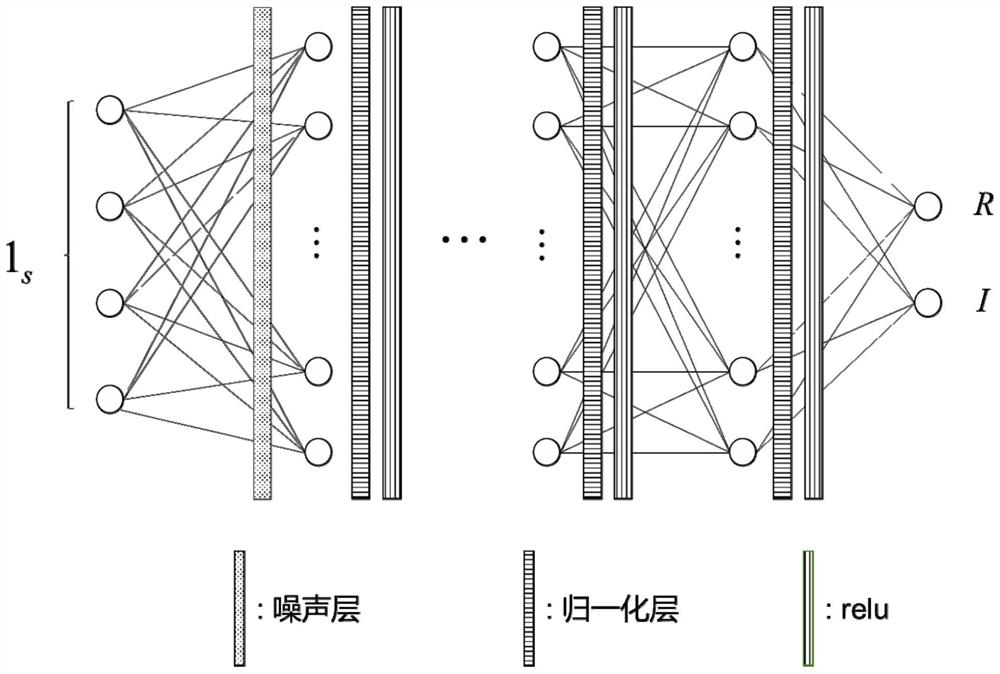Method of establishing scma codec model based on denoising autoencoder
A self-encoder and codec technology, applied in the field of SCMA codec model establishment, can solve the problems of slow convergence speed and long training time of deep neural network
- Summary
- Abstract
- Description
- Claims
- Application Information
AI Technical Summary
Problems solved by technology
Method used
Image
Examples
Embodiment 1
[0113] Take the case of 6 users and 4 resource blocks as an example.
[0114] Such as figure 1 As shown, based on the idea of denoising self-encoder, a certain proportion of random noise is added to the input data, and the SCMA encoder maps the user's original input data into codewords; the encoded codewords are superimposed on the resource blocks in a non-orthogonal manner Transmission, affected by the channel during transmission, the signal is superimposed with noise; a SCMA decoder based on a fully connected neural network is established at the receiving end, and the original input information of all users is decoded according to the input codeword; the above SCMA codec can As a complete noise reduction autoencoder structure, superimpose a fixed size channel noise to train the above SCMA codec model based on noise reduction autoencoder; test the BER of the above SCMA codec model based on noise reduction autoencoder performance. Compared with the traditional SCMA system,...
PUM
 Login to View More
Login to View More Abstract
Description
Claims
Application Information
 Login to View More
Login to View More - R&D
- Intellectual Property
- Life Sciences
- Materials
- Tech Scout
- Unparalleled Data Quality
- Higher Quality Content
- 60% Fewer Hallucinations
Browse by: Latest US Patents, China's latest patents, Technical Efficacy Thesaurus, Application Domain, Technology Topic, Popular Technical Reports.
© 2025 PatSnap. All rights reserved.Legal|Privacy policy|Modern Slavery Act Transparency Statement|Sitemap|About US| Contact US: help@patsnap.com



